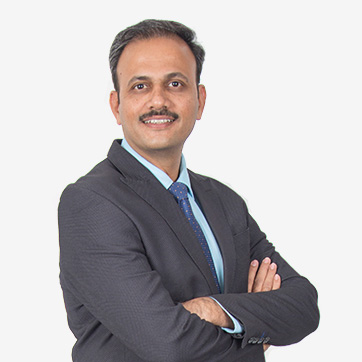
Brachial plexus injury can cause a wide range of problems with the function of the arm. These problems can include weakness, numbness, and pain. Brachial plexus surgery is the best option for treating brachial plexus injury. This surgery can improve the function of the arm and relieve symptoms of brachial plexus injury. Book an appointment with Dr. Nilesh Satbhai today!
Whether you are stirring a spoon to mix sugar in your tea or lifting a dumbbell in the gym, it is a work of an intricate set of nerves. The brachial plexus is a bundle of nerves that control the fine and gross motor movements of your hands and arms.
The brachial plexus sends signals from your spinal cord to your hands, arms, and shoulders. In serious cases, the brachial plexus can be injured if compressed, overstretched, or ripped apart.
Minor injuries to the brachial plexus are common in sportspersons like football players and wrestlers. Sometimes, newborns also suffer from brachial plexus injuries during birth. Other reasons that affect your brachial plexus are inflammatory disorders, trauma, accidents, and tumors.
Depending on the extent and site of the injury, signs, and symptoms vary greatly.
Minor brachial plexus injuries due to compression or overstretching are known as burners or stingers. The symptoms include:
The symptoms of minor injuries last for a few seconds, minutes, or hours.
Severe brachial plexus injuries include tears from the nerve root in the spinal cord. The signs and symptoms of severe injuries are as follows:
Minor injuries tend to heal on their own. But if the brachial plexus injury is severe, you may need consultation from an experienced doctor, who may recommend brachial plexus surgery.
Brachial plexus surgery is a reconstructive surgery performed to correct damage to the brachial plexus. The aim of this surgery is to improve the function of the affected arm and relieve symptoms of brachial plexus injury.
It is not advised to delay your surgery as that may lead to muscle atrophy, which may not work correctly. You should consult Dr. Nilesh Satbhai if your nerve roots are torn in a shoulder or neck trauma or if the nerve bundle is overstretched.
Request AppointmentBrachial plexus repair in severe cases requires surgical interventions. But before planning the surgery, Dr. Nilesh Satbhai will check the damaged nerves, site, and severity of the injury. Dr. Nilesh will perform a physical examination to compare your unaffected limb’s motor function, sensation, and pain to your affected side.
Dr. Nilesh will take a detailed medical history. The doctor may ask you questions regarding the onset and progression of symptoms, about the event that led to the injury and inquire about other health conditions. You will be asked if the injury impacts your life or daily chores.
The consultation will also include questions about the type and severity of pain (dull, throbbing, stabbing, burning, stinging, etc.), weakness, and nerve paralysis. The consultation helps the doctor to reach a diagnosis, and the doctor can select the best treatment approach.
Dr. Nilesh will also carry out some investigations. This includes imaging studies like X-rays, CT, MRI, and ultrasound. These techniques help determine the injury’s location and extent and aid in planning the surgery accordingly. X-rays help to diagnose fractures in the neck, arm, or shoulder.
Another test to check the proper function of the nerve is called electromyography (EMG). This test tells about the extent of damage, location, and healing of nerve injury if restoration of nerve function is possible.
Dr. Nilesh Satbhai will work through the best possible approach for you. Dr. Nilesh will address your problems and provide symptomatic relief too.
There are various treatment options for brachial plexus injury based on the injury’s location, extent, and severity. The mainstay of every treatment is to reduce pain, restoring the nerve function and motor movements of your hand, shoulder, and arm.
Some brachial plexus reconstructive surgeries are as follows:
This surgery is performed if the nerve is torn. The surgeon sews the ends of the nerve with the help of a microscope.
Compression surgery and neurolysis are performed if a nerve is compressed due to surrounding inflammation, tumor, or adhesions, but the nerve is intact. It relieves the pain and restores your arm, shoulder, and neck motor function.
In nerve transfer surgery, the nearby nerve that performs minor functions is joined with the damaged nerve. It provides a framework for new growth and a signal pathway. The nerves that can be transferred to restore sensation and motor function are:
The type of nerve is selected based on location and degree of damage to the nerve. Time plays a crucial role in nerve transfer. It is important to go for nerve transfer before the irreversible loss of nerve function and muscle atrophy.
This procedure is performed if nerve paralysis has occurred. In such cases, the damaged nerve segment is removed and replaced with a sensory nerve from another part of the body, like the sural nerve from the leg. This procedure bridges the gap between the nerves and helps regenerate signals.
Tendon transfer surgery is the option for people who have passed the crucial window period when the nerve could be grafted or transferred. It can be done any time after the injury to the brachial plexus.
This procedure attaches a healthy functional tendon to the damaged tendon due to brachial plexus injury. It helps in restoring muscle movements.
Muscle transfer surgeries are performed in conditions where too much time has passed since the injury, and nerve grafting or transfer is no longer an option. A non-essential muscle from any body part is transferred to the hand, arm, or shoulder to restore the movements. The blood and nerve supply of muscle is established with the help of tiny surrounding blood vessels and non-critical nerves.
These surgeries are performed under general anesthesia. Dr. Nilesh Satbhai will perform a specific procedure after looking closely at the injury.
Different procedures have different recovery times. The tissues and injured nerves take time to restore their function after the surgery. Tissues heal faster than nerves.
Recovery generally depends on overall health, age, injury location, and nerve function loss.
After brachial plexus surgery, a sling is needed to keep the arm in the right position. You may require physical therapy after tendon transfer or muscle transfer surgery. This helps in improving your motor functions.
The cost of brachial plexus surgery will vary depending on the extent of the injury and the type of surgery required. Dr. Nilesh will provide you with a thorough estimate of the cost of your brachial plexus surgery during your consultation.
Request AppointmentBrachial plexus surgery can help you live a better quality of life by restoring function to your arm and alleviating pain. This can lead to improvement in daily activities, enhanced job performance, and a greater sense of well-being.
Like all surgical procedures, brachial plexus surgery carries some potential risks. Infection, bleeding, and blood clots are among the possible complications. During your consultation, Dr. Nilesh Satbhai will go through the risks and complications of brachial plexus surgery with you. If any of these dangers or problems arise, Dr. Nilesh is well-versed in reconstructive procedures and will handle them promptly and effectively.

MBBS, MS, MCh
